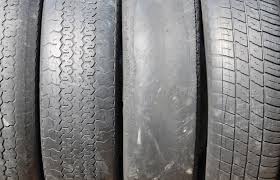Introduction
If you have a car, you might know what a wheel alignment is. If not, you've heard your dad say the words before!
Maintaining your vehicle's alignment is crucial for ensuring a smooth and safe driving experience. Proper alignment not only extends the life of your tires but also enhances fuel efficiency and vehicle handling. In this blog, we will explore regular maintenance practices to keep your alignment in check, seasonal considerations, and advice on how to protect your alignment from common road hazards.
Regular Maintenance Practices
-
Regular Alignment Checks
- Frequency: Have your alignment checked at least once a year, or every 10,000 to 12,000 miles. More frequent checks may be necessary if you frequently drive on rough roads or notice symptoms of misalignment.
- Symptoms of Misalignment: Look for signs such as uneven tire wear, the vehicle pulling to one side, steering wheel vibration, or the steering wheel being off-center when driving straight.
-
Tire Maintenance
- Rotation: Rotate your tires every 5,000 to 7,000 miles to ensure even wear. Uneven tire wear can be both a symptom and a cause of alignment issues.
- Balancing: Have your tires balanced regularly to prevent vibrations that can affect alignment.
- Pressure: Maintain the recommended tire pressure to avoid unnecessary stress on the suspension and alignment components.
-
Suspension and Steering Inspection
- Regularly inspect your vehicle's suspension and steering components for wear and damage. Worn parts can cause misalignment and affect handling.
- Replace worn-out shock absorbers, struts, and bushings as needed to maintain proper alignment.
"The best way to maintain your alignment is to just not drive the car" - Sam |
Seasonal Considerations
-
Winter Driving
- Tire Choice: Use winter tires in snowy and icy conditions to improve traction and reduce the risk of alignment issues caused by sliding or uneven wear.
- Road Salt: Salt used for de-icing can accelerate rust and corrosion on suspension components. Regularly wash your vehicle, especially the undercarriage, to remove salt residue.
-
Summer Driving
- Heat and Pressure: High temperatures can increase tire pressure. Check and adjust tire pressure more frequently during the summer to prevent overinflation, which can affect alignment.
- Long Trips: Before long road trips, have your alignment checked to ensure optimal handling and tire wear during extended drives.
-
Seasonal Transitions
- Spring and Fall: These transitional periods are ideal times to have your alignment checked, especially after harsh winter conditions or before the rigors of summer driving.
Protecting Alignment from Common Road Hazards
-
Potholes and Rough Roads
- Avoidance: Whenever possible, avoid driving over potholes, speed bumps, and rough road surfaces at high speeds.
- Slow Down: If you cannot avoid these hazards, slow down to minimize the impact on your vehicle’s alignment and suspension.
-
Curbs and Obstacles
- Curb Impact: Avoid hitting curbs when parking or turning. Even minor impacts can knock your alignment out of place.
- Obstacle Awareness: Be mindful of road debris and obstacles that can cause sudden jolts to your vehicle.
-
Load Distribution
- Even Load: Ensure that the load in your vehicle is evenly distributed. Uneven weight distribution can affect suspension balance and alignment.
- Overloading: Avoid overloading your vehicle beyond its recommended capacity, as this can stress the suspension system and lead to misalignment.
-
Regular Professional Inspections
- Mechanic Visits: Regular visits to a professional mechanic for inspections and maintenance can help identify and address alignment issues early.
- Using Gyraline: Utilize advanced tools like Gyraline, our mobile wheel alignment tool, to get precise alignment measurements and adjustments conveniently.
Final Words
Maintaining your vehicle's alignment is essential for safe and efficient driving. By following regular maintenance practices, considering seasonal changes, and protecting your alignment from common road hazards, you can ensure your vehicle remains in optimal condition. Tools like Gyraline make it easier than ever to keep your alignment in check, offering precise, on-site alignment services that fit seamlessly into your busy schedule. Remember, a well-aligned vehicle is not only safer but also more enjoyable to drive!
Author: Sam Henao
Last Updated: July 11, 2024




